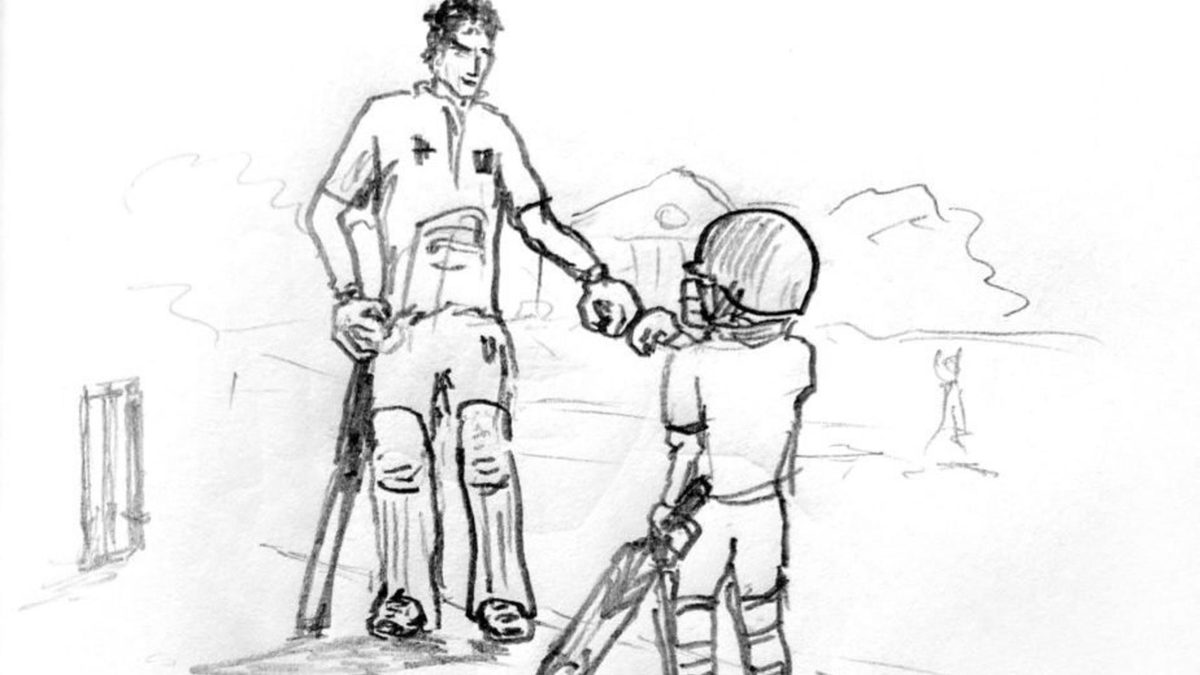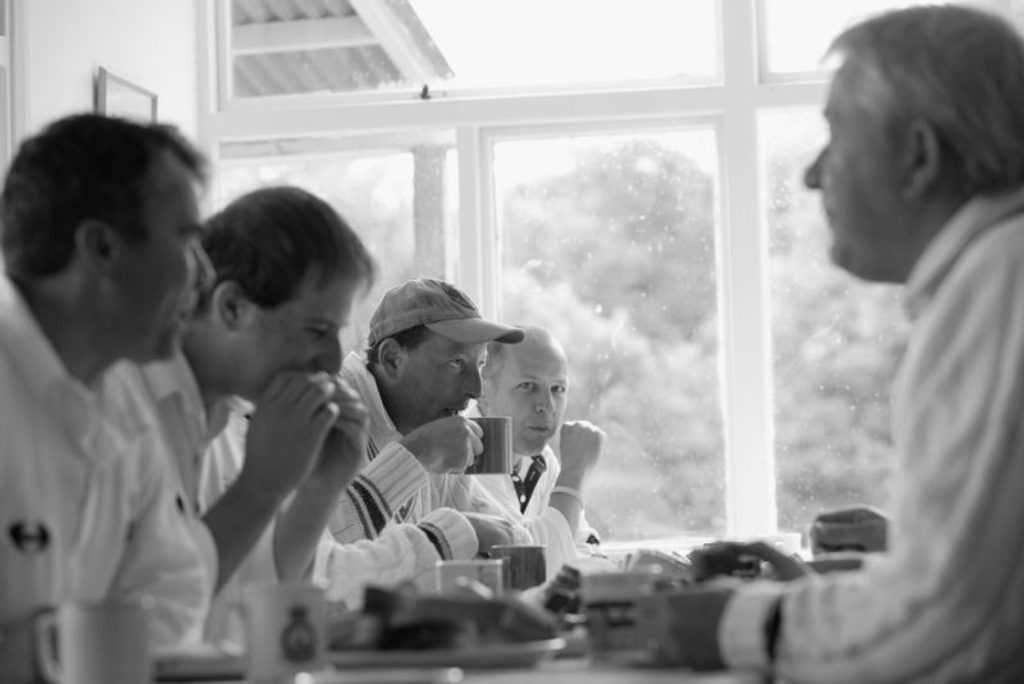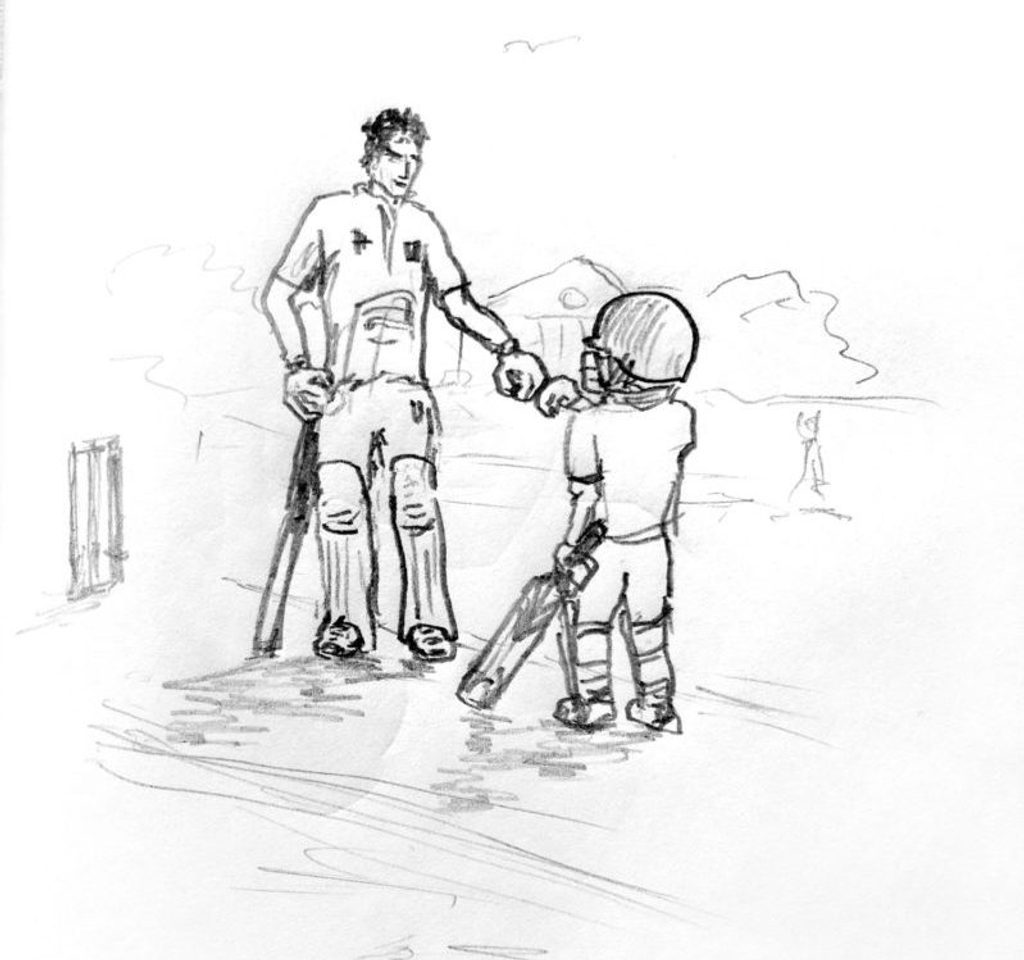
Is there less of a family feel on the village green compared to previous years and how vital is a sense of community to the sustainability of a cricket club? Rich Evans investigates
Your voice matters: Join the debate and share your views on grassroots cricket by commenting below, emailing editorial@wisden.com or tweeting @WisdenCricket.
Previously a cornerstone of village cricket life, many clubs have witnessed a gradual disintegration of the family atmosphere that the recreational game was known for. How many clubs can now genuinely claim to be one of the leading social hubs in their community?
There are some great clubs who attract family supporters, have a thriving junior section, a busy social calendar and provide an all-inclusive second home, but many have ailing engagement levels. The most connected with their immediate environment are often the smaller village clubs off the beaten track, but many face a fight for survival. Junior matches are often well-supported, but it doesn’t always transcend to the seniors on a Saturday, owing in part to the alarming teenage drop-off rate. Last month’s Club Debate centred on how we can placate the modern player in club cricket’s ever-changing landscape. This month, it’s about the collective: Where have the families gone, how vital are they and how can we reengage the community?
***
Paying players, bigger clubs gobbling up smaller ones, a booming marketplace that breeds disloyalty, Premier Leagues and organisational restructures, dwindling participation figures, hectic lifestyles, societal and behavioural shifts – these factors have reshaped club cricket. “All these things eat away at the kind of family, community club environment, that used to be more prevalent,” says Simon Prodger, managing director of the National Cricket Conference. “It’s undoubtedly the case [that there’s a decline of family atmosphere] in a very large number of clubs.

“If you compare the memberships of clubs from 30 years ago to today, the make-up of the playing membership is entirely different. Many clubs do a remarkable job just keeping themselves tenable. There are many clubs who offer a strong family-based environment, but the tradition of grandad, dad and son playing for the same club is drying up.”
Michael Brown, president of Burnley CC, believes families must remain the heartbeat of any club. “Quite a lot of clubs inevitably revolve around families, but there’s less families around and involved in the spine of the club. Clubs aren’t seen as the social place they once were and there are all sort of societal reasons connected to that, including the changing roles of women and the tightening of drink-driving rules.”
For Brown, providing opportunities for families must be at the core of a club’s constitution. “The key to the longevity of a club is to attract families and kids, and to get their families involved in the management of teams, the running of coaching and the administration of the club,” says the former Surrey and Middlesex cricketer. “Hence why you need an appropriate balance between the club striving to win and the club being inclusive of all abilities. Because usually the people who are willing to get their hands dirty don’t always have the most talented children.”
Prodger, who as well as his role with the National Cricket Conference is chairman of Watford Town CC, earned plaudits on social media for his views in last month’s debate on paid players. “You only have one option,” he said. “Build the club from bottom-up – and make a strong junior section. Focus on that, accept whatever may come in terms of league position and build for the future.”
It’s a policy that Matt Dwyer, the ECB’s director of participation and growth, subscribes to. “Being a recreational cricketer, prior to working at Cricket Australia I had a firm opinion that if you’ve got the money then pay players: ‘If your first XI is strong, your whole club will be strong’. I think I’ve got a more holistic perspective on what a cricket club is there to do now. They’re there to be a part of the community, provide a safe environment for kids, and for personal development as well as cricket development.
 Matt Dwyer (L) says his view on how cricket clubs should be run has changed drastically
Matt Dwyer (L) says his view on how cricket clubs should be run has changed drastically
“And if you can really assess what your club is there to do and what they’re famous for, regardless of on-field performance, you can have an amazing environment that sits at the heart of your community and delivers a big difference in peoples’ lives, that isn’t necessarily defined by winning and losing. You can’t just define your club based on that.
“I remember someone coming to our club as president saying: ‘We want to be known as the family club’. We started a women’s section, our junior section exploded, and within five years we were winning Premierships across all grades. There’s a direct correlation. Ten years later that individual moved on, we lost our focus on kids and it was no surprise that five years after that we were out chasing players and blowing a whole heap of money.”
***
As last month’s debate alluded to, getting player, parent or family buy-in for fundraisers and social evenings is no small task. My club has its flagship fundraiser this month, so I offered a magazine subscription for the raffle. The secretary replied: “A subscription to WCM might have limited appeal to the dinner-and-dance audience as only a small minority are cricketers.” I didn’t take it personally. The event will predominantly be attended by parents of junior cricketers, as the seniors continue to ignore the club’s request for support outside of match day.
“Poor attendance at social functions is the norm,” says Prodger. “Social events are attended by a core of old-timers and players from the lower elevens. Our junior functions are better attended – that section is well supported and sustaining the club financially. It gives us the air in our lungs which makes us feel there’s a future for our club.”
“Our junior events are better attended than our senior ones,” concurs Brown. “The senior events are harder to attract people, because of the amount of cricket. Playing Friday, Saturday, Sunday – it’s not rocket science that you don’t want to spend your whole weekend there. For Burnley, social dos are not money-making events. Say you take £1,000 behind the bar – you’ve got labour costs, electricity – so you’re probably making £300. But what you do create is people coming down, having a good time, seeing the club as somewhere to bring their families.”
Despite the obstacles, creating a social environment is a challenge club cricket can ill-afford to shirk.
Kids have so many more activities available to them – how can both they and Dad/taxi driver accommodate such a leisurely past-time? It used to be common to bring your kid to the game and you’d keep an eye on them as they kicked a ball around the boundary. Nowadays, that might be considered neglect. Cricket was a day-long event, which, post-match, included more than a quick shower and swift half. You used to ‘drink back the fixture’ – a poor performance on the pitch could be redeemed by a good performance in the bar. Now, generally speaking, the younger generation are not as inclined to socialise with the oppo after the game, and use the clubhouse for a few cheap tinnies before hitting the town.

The increasing instances of club cricket being played in bad spirit also works against the idylls of community, participation and family. “There’s a big issue within the recreational game – discipline,” says Prodger. “The general behaviour in club cricket has significantly reduced. Younger players don’t respect the traditions and etiquette of the game – that’s having an effect. Cricket is played in an atmosphere today that is far meaner than it used to be.”
Nick Patefield, second team captain of Brighouse CC, also laments the declining sociability and ‘monster’ of league cricket. “There’s not that camaraderie between players,” he says. “There’s a bit of animosity because no one knows anyone anymore – you’re playing against strangers. There’s no social side to it – not in our area. With the big pyramid leagues, you’re losing that local rivalry and banter. These super leagues are scaring people away.”
***
Subtract two of the foremost families in your club, and what do you have left? Families are the supply line; most of the young cricketers at my club are playing because their parents played. Without that family introduction, how much worse would participation figures be? It’s not like we can rely on public schools to foster an appetite. A youngster may watch Ben Stokes and want to take up the game – but who’s going to encourage them to stay in it when the going gets tough, such as competing in a senior league match for the first time? There’s an overall feedback loop at play here.
A cricketing family can be extended beyond bloodlines, and a good club makes you feel part of a community. The junior section at my club has forged a tight-knit group; uniting the junior and senior section is less straightforward but the club has tried to foster cohesion and a clear pathway for young players. The rise of league cricket, declining on-field behaviour and societal shifts have caused dissensions among the cricketing family, but with many clubs and leagues set to merge over the next few years, a bitter divorce could swiftly be followed by a marriage of convenience. Our family must pull together in these uncertain times.
An ironic twist in the tale is that many fathers who had previously fallen through the cracks are returning to cricket because their sons are playing – a bi-product of flourishing junior sections, which never used to be on the same scale. The regeneration of club cricket is not just a daydream, but it must have family and community at its very heart.
…
Previous club debates:
https://www.wisden.com/stories/your-game/club-cricket/how-can-we-placate-the-modern-club-cricketer-club-debate
https://www.wisden.com/stories/your-game/club-cricket/club-debate-time-clubs-embraced-t20
https://www.wisden.com/stories/your-game/club-cricket/overseas-players-in-club-cricket-are-they-worth-the-risk-in-2018
https://www.wisden.com/stories/your-game/club-cricket/is-the-admin-burden-pushing-clubs-and-leagues-to-breaking-point








